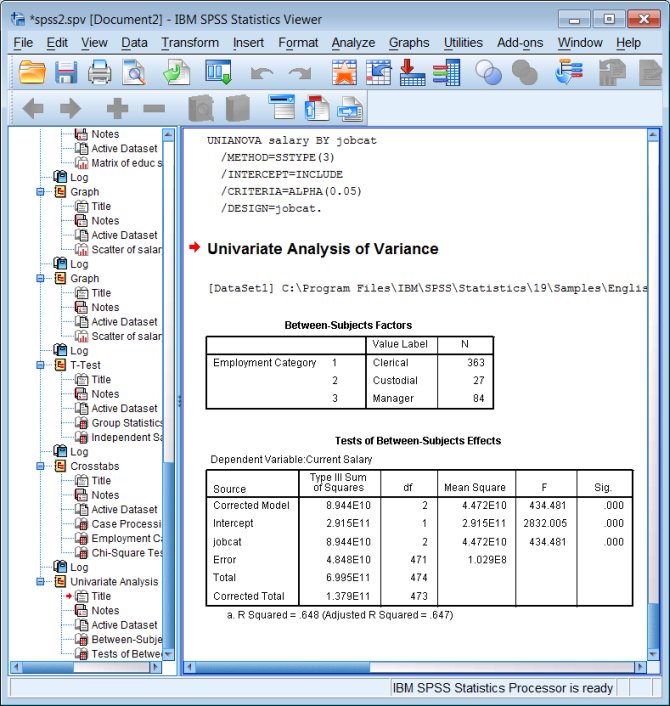
We can see in this case the adjusted R Squared value is the same as the R Squared value, 0.297. The adjusted R square accounts for this and adjusts for inflation from the number of variables included. Adjusted R Square is important because the more independent variables we include the higher our R squared value will become. This is a high value! Although, we need to look at the “Adjusted R Square” that accounts for the number of independent variables in our model. Included is our “R Squared” (second column from the left) value which is 0.297 and is interpreted as the variables “age”, “sex”, “education”, and “language” that explain 29.70% percent of the variance of individuals wages in this dataset. In the second table below, “Model Summary”, is where we will find the model fit statistics to judge how well our independent variables explain the variance of wages. We have “Enter” the variables which is the standard way of input. Finally, “Method”, is the column indicating the way in which we have included our independent variables in the regression model. “Variables Removed” are the variables that we have removed from the regression model and since we are only running one model no variables are excluded. The next column, “Variables Entered”, shows us our independent variables we included in the regression model. Since, this is our first and only model it is labeled as 1.

The first column “Model” is the number of models we have ran with this set of variables. In the first output table, “Variables Entered/Removed”, SPSS shows an overall summary of the regression model. We want to minimize this distance between our points and the regression line to have the best fit of our observed points. Lastly, $\epsilon$, is the error term of the regression formula, which is distance of each point ($i$) to the predicted regression line. The same goes for $sex(x_2)$, $education(x_3)$, and $language(x_4)$ which are the remaining independent variables, “sex”, “education”, and “language”, that are multiplied by the calculated coefficients in the model. Next, $age(x_1)$, is the variable “age” multiplied by the calculated regression coefficient that is added to $\beta_0$. We can think of $\beta_0$ as our starting wage value of the observations in the dataset. This is equal to $\beta_0$, the intercept of the model where our regression line intersects with the y axis when $x$ is zero.

$_i$, is our dependent variable of the model that we are predicting with four independent variables of a specific observation $i$.

Language is coded as 1= “English”, 2= “French”, and 3= “Other”. This is a nominal level variable measuring the language that each respondent speaks. This is a continuous level variable measuring the number of years of education each respondent has.

Below is a breakdown of the variables included in our model to help us keep track of the types of variables we are working with.


 0 kommentar(er)
0 kommentar(er)
